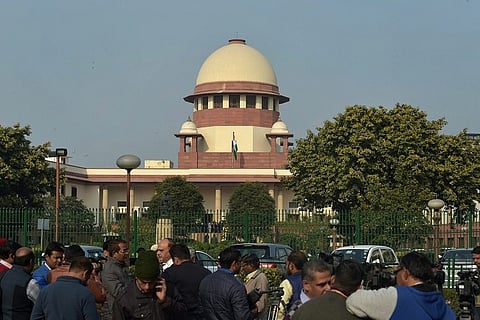

It’s safe to say that if any one institution or person has come out looking good from the drama around the 2018 Karnataka Assembly election results, it is the Supreme Court. Even the most one-eyed partisan will find it hard to question the legality and correctness of what the Supreme Court has done. The court (specifically the bench of Justices AK Sikri, SA Bobde and Ashok Bhushan) acted promptly, fairly and most important perhaps, decisively. Though the reliefs claimed by Congress and Janata Dal (Secular) were quite broad (and maybe we’ll not see them pressed when the Supreme Court re-opens after vacation), even so, the court was clear what needed to be done, and did it in the best possible manner.
When the case was heard in the early hours of May 18 (after Governor Vajubhai Vala invited BS Yeddyurappa to form the government and fixed the swearing in for 9 am the next day), the court understood the urgency of the matter but stayed its hand until it had all the information before it. While the Congress and JD(S) had claimed that they had the majority, it wanted to be absolutely certain of the strength of BJP’s claim before moving ahead. Therefore, the order to produce a copy of the letter written by Yeddyurappa to the Governor.
As soon as they saw the numbers (and crucially, the absence of any specifics when it came to how Yeddyurappa would make the majority), the bench knew that the fifteen day time period given by the Governor to Yeddyurappa to prove his majority was simply untenable in law. It was an open invitation to find ways to work around the anti-defection law under the Constitution, and alive to the possibility, the Court ensured the floor test took place as soon as possible. The best efforts of Yeddyurappa’s counsel to get some extension, any extension was met with polite but firm denial.
Even after this, when the Governor overlooked the senior-most MLAs in appointing the pro tem Speaker, KG Bopaiah, who was to conduct the floor test, and the Congress once again came to court, the court maintained its sangfroid and merely noted that ensuring live streaming of the proceedings would take place. Personally, I felt that the court had missed a trick here in not mandating a division of votes (especially given Bopaiah’s track record), but the court’s confidence in its own order and the need to avoid over-reach was fully justified. Perhaps the fact that the court was fully alive to the situation and expected all parties to “behave”, might have played a role in Yeddyurappa’s eventual resignation before the floor test when he realized he didn’t have the numbers.
As commendable as the court’s role in the matter has been, what’s perhaps heartening is that ensuring fair play in the parliamentary process is one of the areas where the court’s role has been consistently laudable in the last two decades. Ever since the controversy over Jagdambika Pal’s benighted attempts at being Chief Minister of Uttar Pradesh landed up in the Supreme Court, we have seen multiple instances of the judiciary being called in to settle disputes over government formation at the State levels. Over the years, the Supreme Court has had to step in when it came to Jharkhand, Goa, Uttarakhand and Arunachal Pradesh to ensure that the sanctity of the parliamentary process is maintained.
Apart from fractured verdicts and mandates in elections, the core reason why the court is often called upon to intervene is the same: the Governor. To be precise, the Governor has not been a neutral arbiter of disputed claims by political parties, but an agent of the Central Government carrying out its wishes to favour one party over the other. This is a clear and obvious betrayal of the trust invested in this high office under the Constitution. It is not a recent phenomenon. Even in the 1950s, Governors meddled in State politics on behalf of the Centre (notoriously in then Madras Presidency) suggesting that we have never really seen a sustained period of good faith behaviour on the part of Governors.
However, the judiciary has come a long way since. In 1952, when Governor Sri Prakasam’s efforts to engineer a congress majority were challenged in court, the Madras High Court refused to intervene, calling it a “political question”. We can safely say that even though Governors’ behaviour has not changed, courts have come a long way, especially since the landmark SR Bommai case which has greatly reduced the frequency with which governments use the power to impose President’s Rule on a State.
While almost every government in the Centre, irrespective of the ruling party, has tried to use Governors for partisan purposes, it is also true that the Supreme Court has, in the recent past, been just as firm in stopping it, irrespective of the party in power. If the Congress was the beneficiary of the court’s intervention in Karnataka and Uttarakhand, it was the BJP which benefited from its intervention in Uttar Pradesh and Jharkhand.
At a time when the Supreme Court’s credibility is under question (with good reason), it is a relief to see that it is still capable of functioning as intended in the most trying of circumstances. That the court has not only ensured that justice is done, but has also ensured that justice is seen to be done when it comes to the Karnataka elections is commendable and a credit to the institution.
Alok Prasanna Kumar is a Senior Resident Fellow of the Vidhi Centre for Legal Policy. Views expressed here are personal.